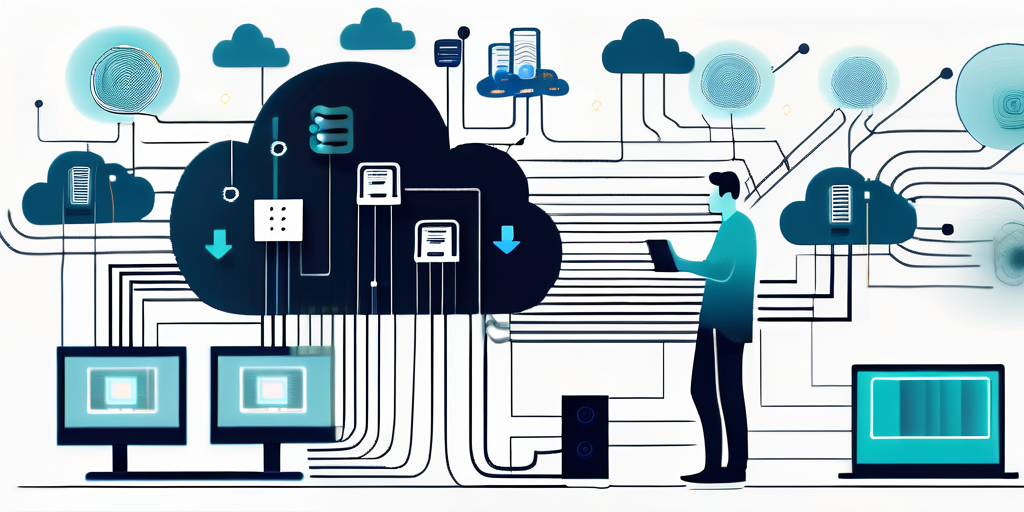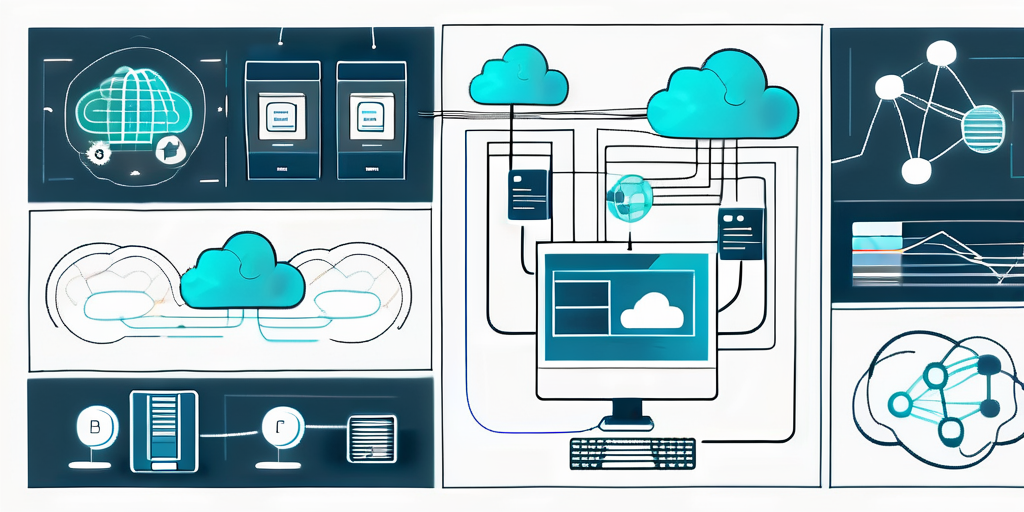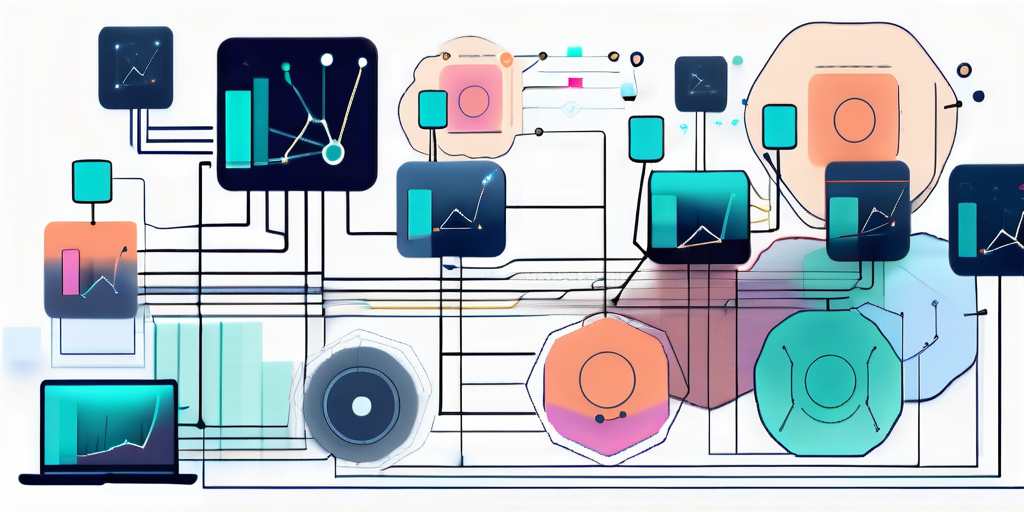Introduction to Unstructured Data

Unstructured data is a term used to describe any data that lacks a predefined data model or organization. Unlike structured data, which is organized into fields and tables, unstructured data is typically text-heavy and lacks a clear structure. This type of data can be found in a variety of sources, such as social media posts, emails, documents, and multimedia content. In this article, we will explore the basics of unstructured data, its types, and the challenges that come with extracting valuable insights from it.
Understanding the Basics of Unstructured Data
Unstructured data poses unique challenges due to its lack of organization. Unlike structured data, which can be easily analyzed and processed, unstructured data requires more sophisticated methods to derive meaning from it. Understanding the nature of unstructured data is crucial for organizations looking to harness its potential.

Unstructured data can consist of a wide range of information, including text, images, audio, and video. This diverse range of formats makes it harder to analyze and process compared to structured data.
One characteristic of unstructured data is the lack of a predefined schema. This means that the data does not follow a specific format or structure, making it difficult to organize and categorize. The absence of a defined structure poses challenges when it comes to extracting insights from unstructured data.
Another key aspect of unstructured data is its sheer volume. With the proliferation of digital content in today’s world, organizations are inundated with massive amounts of unstructured data on a daily basis. This data deluge presents both opportunities and challenges for businesses seeking to leverage this information for strategic decision-making.
Furthermore, unstructured data often contains valuable insights that can drive innovation and competitive advantage. By harnessing advanced analytics and machine learning techniques, organizations can unlock hidden patterns and trends within unstructured data sets, leading to new opportunities for growth and optimization.
Types of Unstructured Data Sources
Unstructured data can be sourced from various channels, each presenting its unique challenges and opportunities. Some common sources of unstructured data include:
- Social Media: Platforms like Facebook, Twitter, and Instagram generate vast amounts of unstructured data in the form of posts, comments, and messages.
- Emails: The content of emails is largely unstructured, making it challenging to extract relevant information and insights.
- Documents: Text files, PDFs, and other text-based documents contain unstructured data that needs to be managed and analyzed.
- Media Content: Images, videos, and audio recordings contribute to unstructured data sets, requiring specialized techniques for analysis.
These are just a few examples of the many potential sources of unstructured data. As technology advances, new sources are continuously emerging, further increasing the complexity of managing and analyzing unstructured data.
Another significant source of unstructured data is IoT devices. The Internet of Things (IoT) has exploded in recent years, with devices like sensors, smart appliances, and wearable technology generating massive amounts of unstructured data. This data is often real-time and can provide valuable insights into consumer behavior, environmental conditions, and operational efficiency.
Furthermore, web scraping is a popular method for collecting unstructured data from websites. By extracting information from web pages, organizations can gather data on competitors, market trends, and customer sentiment. However, web scraping comes with its own set of challenges, such as ensuring data quality and complying with website terms of service.
Extracting Insights from Unstructured Data
Despite its challenges, unstructured data presents valuable insights that can be leveraged for business intelligence, research, and decision making. Organizations that can effectively analyze and extract insights from unstructured data gain a competitive advantage in today’s data-driven world.
There are various techniques and technologies available to extract insights from unstructured data. Natural Language Processing (NLP), machine learning, and text analytics are some of the most commonly used methods. These techniques allow for the parsing, categorization, and sentiment analysis of unstructured data, providing valuable insights that were previously untapped.
By analyzing unstructured data, organizations can uncover trends, patterns, and sentiments that provide deep insights into customer preferences, market trends, and potential opportunities. This knowledge can drive more informed decision making and facilitate better strategic planning.
One of the key benefits of leveraging unstructured data is the ability to gain a more comprehensive understanding of customer behavior. By analyzing text data from customer reviews, social media posts, and surveys, organizations can identify common themes, preferences, and pain points among their target audience. This information can be used to tailor products and services to better meet customer needs, ultimately leading to increased customer satisfaction and loyalty.
Furthermore, the insights extracted from unstructured data can also be used to enhance marketing strategies. By analyzing the sentiment and language used in customer interactions, organizations can develop more targeted and personalized marketing campaigns. This level of customization can improve customer engagement and conversion rates, ultimately driving revenue growth for the business.
Unstructured Data and Retrieval Augmented Generation
One of the emerging fields related to unstructured data is Retrieval Augmented Generation (RAG). RAG combines the power of information retrieval and language generation techniques to generate human-like responses based on unstructured data.

RAG models utilize large-scale pre-training on unstructured data to improve the generation of responses in conversational AI systems. By leveraging the knowledge contained within unstructured data sources, RAG models can produce more contextually relevant and accurate responses, enhancing the user experience and conversational quality.
Furthermore, RAG models can be fine-tuned on specific domains or topics to tailor the generated responses to particular areas of interest. This adaptability allows RAG systems to excel in various applications, from customer service chatbots to virtual assistants, by providing customized and precise information to users.
Additionally, the integration of RAG models with existing information retrieval systems can enhance the search capabilities of these systems. By incorporating natural language generation into the retrieval process, users can receive more informative and coherent responses to their queries, bridging the gap between traditional keyword-based search results and human-like interactions.
Challenges Extracting Content from Unstructured Data
While unstructured data holds valuable insights, extracting meaningful content from it is not without its challenges. The lack of structure and standardized formats make it difficult to process and analyze this type of data effectively.
One of the key challenges is data quality. Unstructured data can be noisy, containing irrelevant or duplicated information. Filtering through the noise to identify the relevant content requires advanced techniques such as natural language processing and machine learning algorithms.
Another challenge is the sheer volume of unstructured data. With the exponential growth of digital content, managing and analyzing large-scale unstructured data sets becomes a resource-intensive task. Organizations need scalable solutions and efficient processing techniques to handle the ever-increasing amounts of unstructured data.
Moreover, unstructured data comes in various forms, including text documents, images, videos, and social media posts. Each type of data requires different processing methods and tools for effective analysis. For example, analyzing text data may involve techniques like sentiment analysis and named entity recognition, while analyzing images may require computer vision algorithms for object detection and image classification.
Additionally, unstructured data often lacks metadata or labels, making it challenging to organize and categorize the information. This absence of metadata hinders the ability to perform accurate searches and retrieve relevant data efficiently. Data enrichment techniques, such as entity extraction and content tagging, can help in structuring unstructured data for better organization and retrieval.
Chunking Unstructured Data
To make sense of unstructured data, organizations often employ chunking techniques. Chunking involves breaking down unstructured data into smaller, more manageable chunks for analysis.

By chunking the data, analysts can focus on specific sections or topics, making it easier to extract meaningful insights. Chunking can be done based on various criteria, such as time periods, topics, or categories, depending on the specific needs of the analysis.
Additionally, chunking allows for iterative analysis and continuous improvement. By analyzing smaller chunks at a time, organizations can refine their analysis techniques, identify patterns, and adjust their approaches to extract more valuable insights from the unstructured data.
Moreover, chunking can also aid in data visualization and presentation. Once the unstructured data is segmented into manageable chunks, it becomes easier to create visual representations such as charts, graphs, and dashboards. These visual aids can help stakeholders grasp complex information more easily and make data-driven decisions effectively.
Furthermore, chunking can enhance data security and privacy measures. By breaking down large datasets into smaller chunks, organizations can apply different security protocols to each chunk, ensuring that sensitive information is protected. This approach minimizes the risk of a data breach compromising the entire dataset.
Conclusion
Unstructured data presents both challenges and opportunities for organizations. Understanding the basics of unstructured data, its sources, and the techniques to extract insights from it is crucial in today’s data-driven world.
By utilizing advanced methodologies, such as natural language processing, machine learning, and retrieval augmented generation, organizations can unlock the full potential of unstructured data. Through the extraction of meaningful content, organizations can gain valuable insights that drive informed decision making, improve customer experiences, and foster innovation.
As technology continues to advance, the capabilities to analyze, manage, and extract insights from unstructured data will become even more sophisticated. Embracing the potential of unstructured data will be a key factor in staying competitive in a rapidly evolving business landscape.